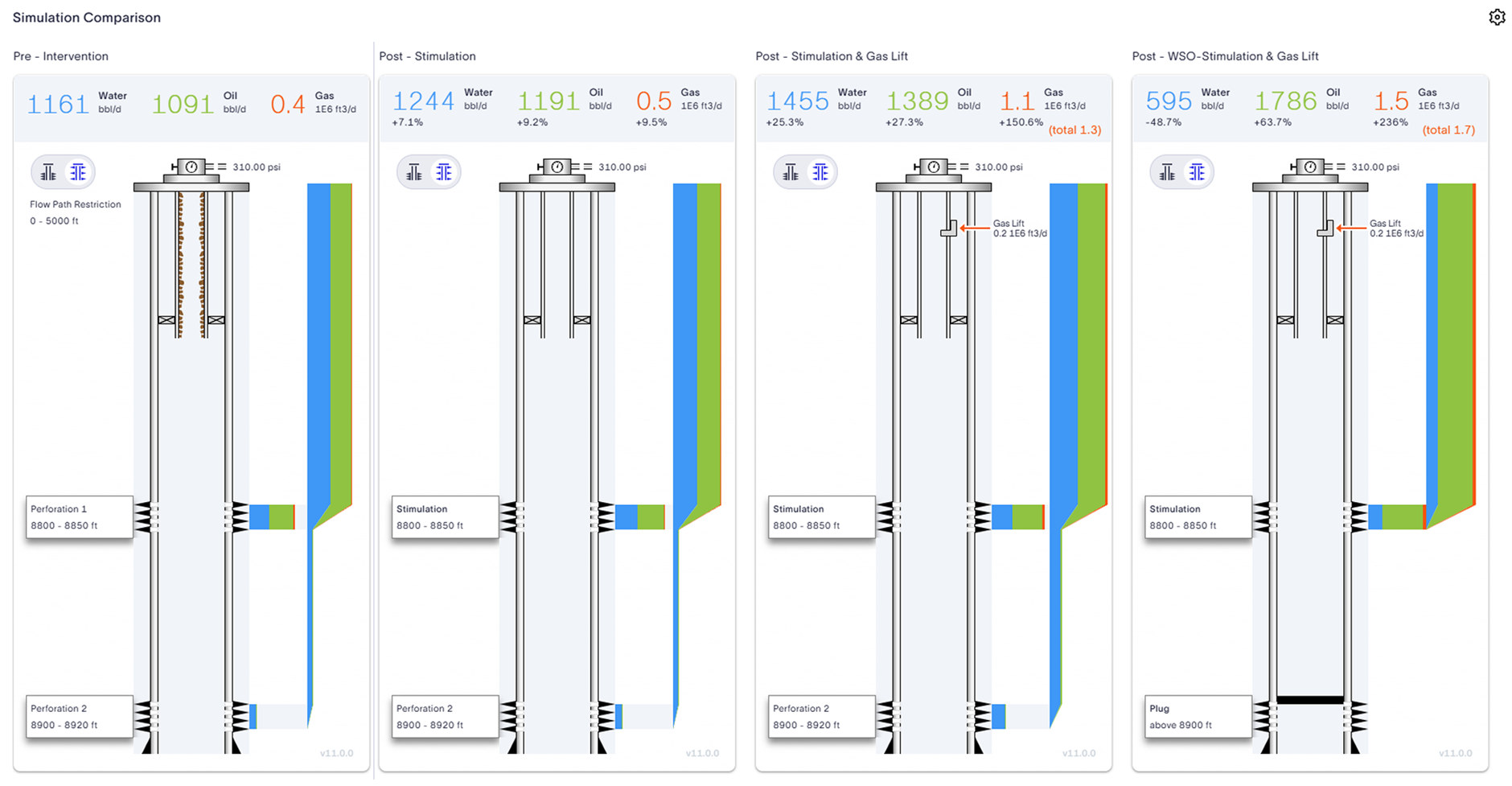Pipesim steady-state multiphase flow simulator
Production optimization over the complete lifecycle
The new generation in multiphase flow simulation to overcome fluid flow challenges and optimize production.
To combat waning field production, an operator launched a production enhancement program for 30 mature wells in West Africa. Ongoing production challenges included high water cut, sand production, underperforming gas lift systems, and viscous fluid production. In addition, the field had complex completions, including horizontal wells with autonomous inflow control devices (AICDs), and formations with thin oil rims.
The operator sought to maximize recovery through strategic well interventions. However, conventional communication methods and limited modeling tools made it impossible to achieve the desired production goals. The intricate dynamics of these wells required a more sophisticated approach. Recognizing the program’s constraints, the operator partnered with SLB for digital‑driven well intervention planning that would improve decision making and, ultimately, optimize production from its existing assets.
Backed by SLB domain expertise, the Intervention Advisor solution provided a collaborative environment to plan and derisk interventions in this mature field. The tool leveraged cutting-edge artificial intelligence and digital technologies to assess complexity, risk, cost, and ROI of various technologies and approaches. SLB conducted detailed simulations using Pipesim™ steady-state multiphase flow simulator, a simulator featuring advanced mechanistic models, heat transfer and PVT modeling, GIS map canvas, rapid well model building, and a parallel network solver. These simulations modeled horizontal wells with AICDs, providing different intervention scenarios, such as water shutoff, gas lift optimization, and well stimulation. Techlog™ wellbore software and Petrel™ subsurface software consolidated and analyzed wellbore data, supporting complex, multidomain workflows and facilitating better, faster decision making.
The Intervention Advisor solution served as the central repository for the entire workflow of the intervention program—enabling the operator to plan the sequence of steps, visualize multiple scenarios, select technologies, and simulate potential production gains. As a result of the detailed simulations and modeling, the operator selected 11 wells for intervention and continuous monitoring from SLB.


CleanSWEEP I, Flow Scanner, Peak, and Pulsar are marks of SLB.